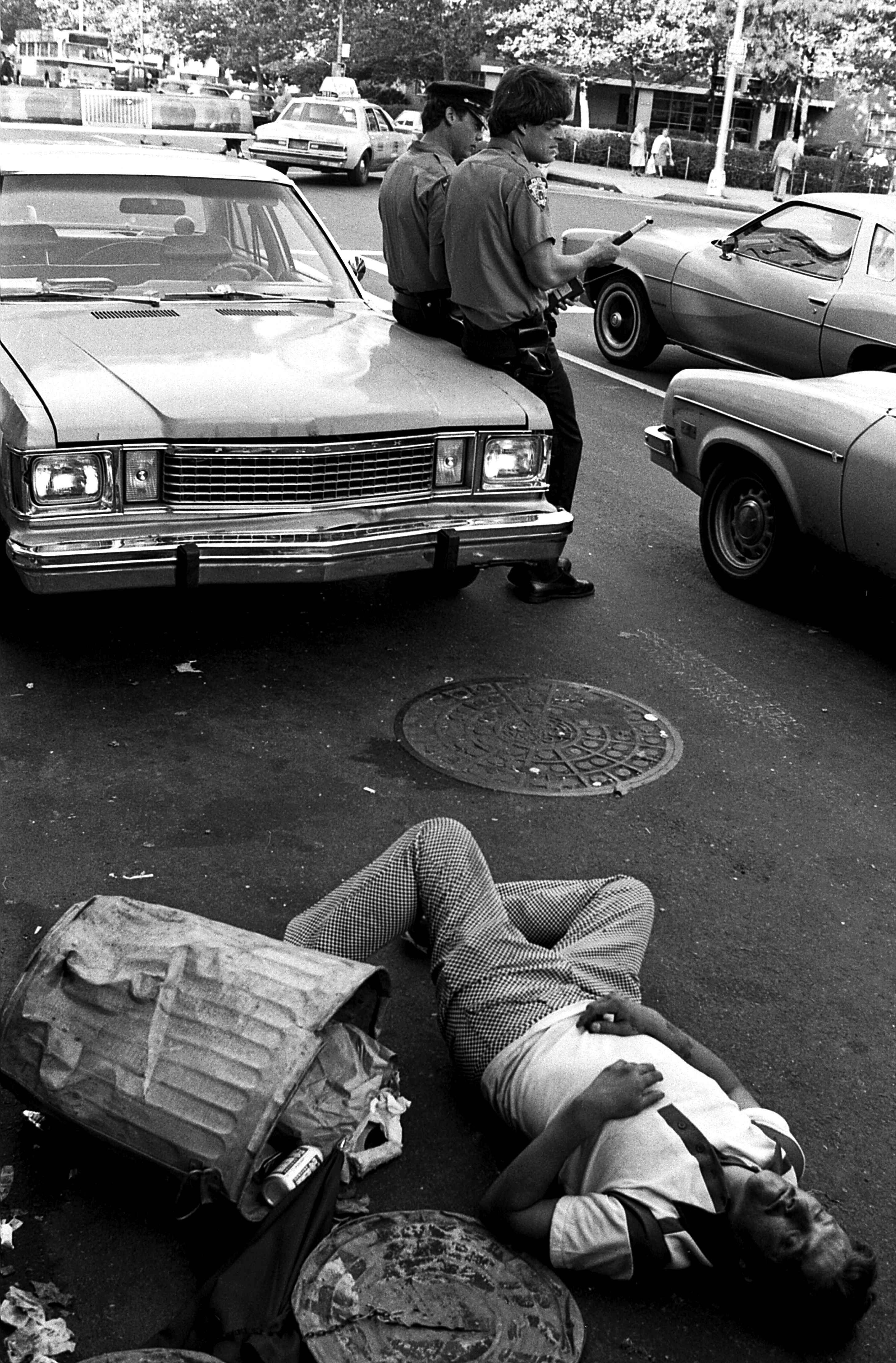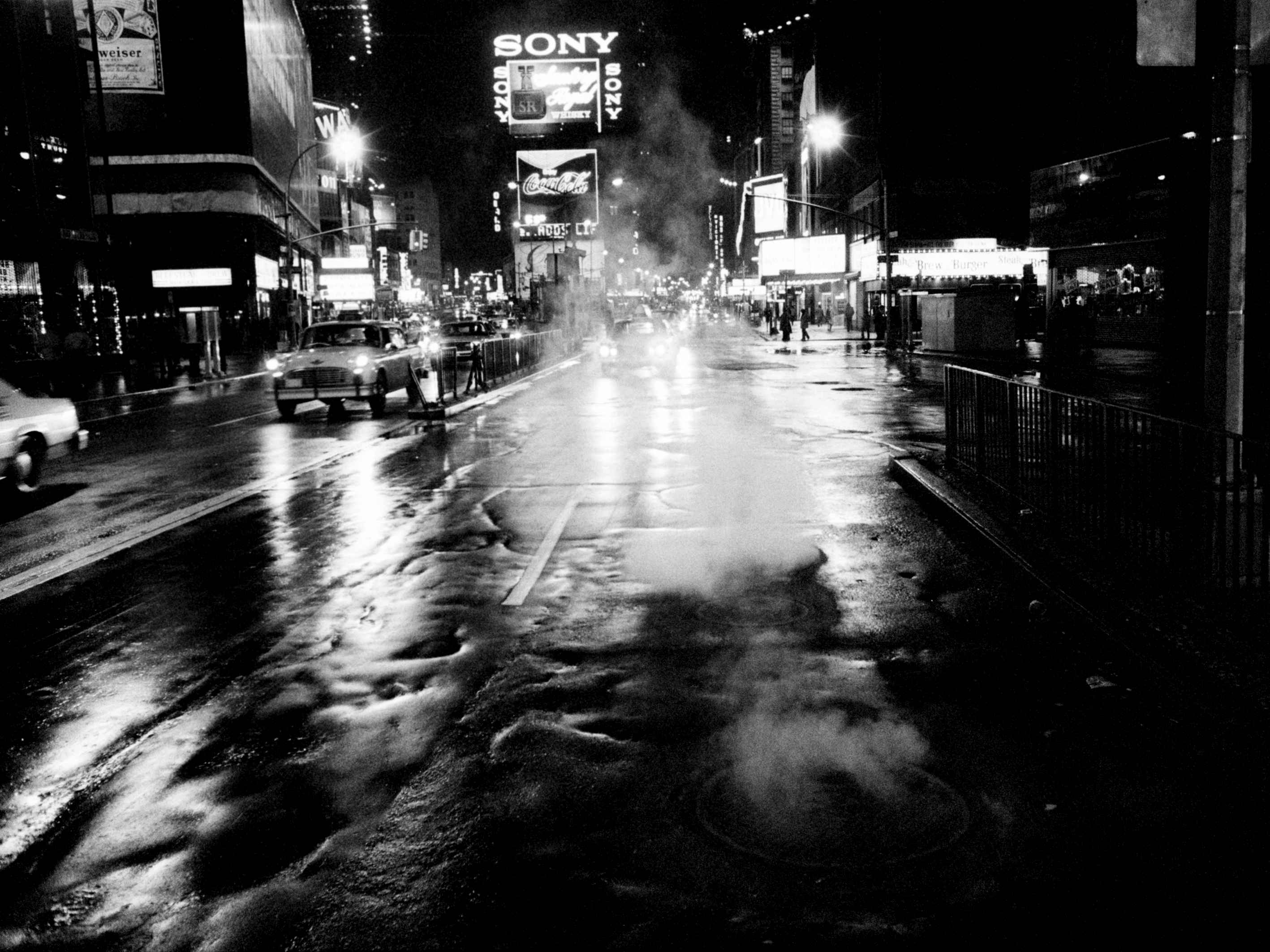Hailed by Terry Southern as the “Poet of Radical Photography,” Miron Zownir took up photography in the late 1970s when he arrived in West Berlin. Moved by the spirit of punk, Zownir embraced the utopian vision of anarchy and nihilistic self-destruction that flourished openly on the streets and in the sex clubs, drug dens, and nightlife of West Berlin and London.
It was a spirit that continued to guide his photography when he moved to New York in 1980, just as the city reached new heights of decadence just before the advent of AIDS. Using his camera as his guide, Zownir made his way from his digs in the East Village to explore the streets of New York at its most outlaw.
Videos by VICE
Before gentrification erased all that had come before, Zownir captured New York’s seedy years when prostitutes walked the streets, movie theaters screened porn around the clock, live sex and peep shows took loose change, and the West Side piers were the ultimate destination for anonymous sex—but also art interventions by Vito Acconci, Gordon Matta-Clark, and Peter Hujar in the years following Stonewall.

Zownir’s photographs show New York after a decade of “benign neglect” and landlord-sponsored arson that reduced large swaths of the Bronx, Brooklyn, Harlem, and the Lower East Side to rubble. Real estate was affordable—if not outright cheap—after white flight had sent the middle class out to the suburbs. In their absence, artists like Zownir arrived, mixing and mingling with locals with roots going back generations to create a powerful document of an era that has otherwise disappeared.
In Zownir’s pictures, we see the people who often fall through the cracks from the eye of one who understands the struggle and pays respect in the tradition of Bruce Davidson, Nan Goldin, and Larry Clark. In advance of a presentation of his work by Galerie Bene Taschen during Photo London (May 16-19), Zownir takes us on an incredible journey though the New York underground.
What inspired you to take up photography in the late 1970s?
I started out in Berlin. My girlfriend at the time studied photography and after I got rejected from two film schools, I borrowed her camera, went out into the streets, and did what I still do. It started out as a form of compensation, but I soon was fascinated by the atmospheric, visual, creative, and historical spectrum I discovered in documenting a moment in time.
From early on, I was inspired by the dark gloom of the dilapidated ruins and wastelands after World War II Germany, its disabled vets and traumatized widows, black and white newspaper photography, silent movies, fairy tales, literature and poetry. I was an observer and dreamer and the people I was most fascinated by were misfits, rejects, outlaws, and strangers. It was only natural for me to focus on the sinister, morbid, forbidden and dangerous aspects of life.
Why did you decide to move to New York in 1980?
After living in Berlin and London, New York City seemed to me the culmination of anything a city could offer. And contrary to now, in the 1970s and 80s, you could venture into almost any city in the Western hemisphere with almost no contacts or any substantial materialistic means if you were adventurous, tough, or desperate enough to take a chance.
Rents were still affordable and charisma was more appreciated than a PhD or any other academic expertise. New York from the beginning flashed me. It was fast, furious, unpredictable and crazy—a seemingly untamed jungle with the rebellious, hedonistic spirit of an almost apocalyptic dimension. It had a violent setback with the outbreak of AIDS and the consequence of ruthless gentrification starting in the mid/late 80s.

What was the East Village was like when you moved there?
I’ve lived for eight and a half years on 4th Street between First and Second Avenue, right behind the Hell’s Angels headquarters. I worked as a bouncer at Danceteria, doorman at the Mudd Club, demolition worker at Area, bodyguard, model, escort and so on. Some of those jobs were too bizarre to mention.
I never had any freelance assignments. I always worked on my own terms. But I had some early work published in the Village Voice, East Village Eye, and New York Native that connected me with the art world of the East Village, which was one of the most vibrant, exotic, and exciting areas in New York. It was a melting pot where anything seemed possible—creative, tolerant, cosmopolitan, innovative, and smooth.
But people also got mugged, addicted, defeated, or killed. Alphabet City, the Lower East Side, and the Bowery were too close to make it a comfort zone. And even though I had every opportunity to mingle with the in-crowd and hipsters, I focused my attention on other more existential topics.

When you were making the photographs, did you have a vision for the work?
The provocative energy and aggressive hedonism [I tried to capture] was an almost endemic phenomenon that conquered the city and its inhabitants regardless of someone’s position, income, or future perspectives. I didn’t need to have a prefabricated concept; the story was told by itself. All I did was capture its spirit and energy with an open mind and respect for its protagonists. My approach to photography was always intuitive and subjective, with a strong sense of the aesthetic values in even the most outrageous situation I encountered.
What was the most bizarre or unlikely encounter you had making these photographs?
There were so many unusual encounters. For example, Lincoln Swaydos. He was the worst and most obnoxious street musician in the East Village. He had lost one arm and one leg by jumping in front of a train and performed so aggressively as if he wanted to insult everybody alive. Since he lived in my neighborhood, we got acquainted, and whenever I asked him a question he would discuss the answer with his tomcat Satchmo.
He lived in a dilapidated place full of garbage and slept in his bathtub. One day while I made photos of him he asked me to take off my shoes and masturbated to Looney Tunes. Before I moved to LA, he told me his landlord wanted to kick him out of his flat but he would never leave. When I returned and was driving by his sealed-up place, I said to my ex-wife, “Lincoln is dead.”
Two days later, I found out that he refused to leave his apartment and suffocated to death while workers renovated the building. Some newspapers speculated that the owner of the building might have known he was still in his apartment but preferred to get rid of him this way rather than deal with him in court.

Can you talk about how AIDS, crack, and homelessness changed what you were seeing on the streets of New York during the ‘80s?
I knew Klaus Nomi through Danceteria, where he was a regular. One day he told me, “I’m going to Germany for a big TV show that will be televised all over the world.” He was sure that would be his international breakthrough. That was the last time I saw him. Next thing I knew, there was a benefit party for him at Danceteria because he was dying of AIDS.
Shortly after his death, the streets of New York were full of digital signs with the numbers of the people who had died of AIDS. One day it was 50,000, and not that long after it went up to 70,000. Everybody in New York got scared and paranoid and it changed the carefree attitude dramatically. The number of homeless population increased as well, like the crack addicts, the muggings, and the police raids.
It was as if New York was suddenly shaken and cursed by an uproar of senseless destruction orchestrated by an invisible enemy of everything that was optimistic, carefree, and daring.





You can follow more of Miss Rosen’s work here.
More
From VICE
-

Things of rare beauty -

Beachcombers of Newfoundland and Labrador / Facebook -

Photo by Christian Filardo -

Protestors against Italy's surrogacy ban. (Photo by Simona Granati – Corbis/Corbis via Getty Images)
